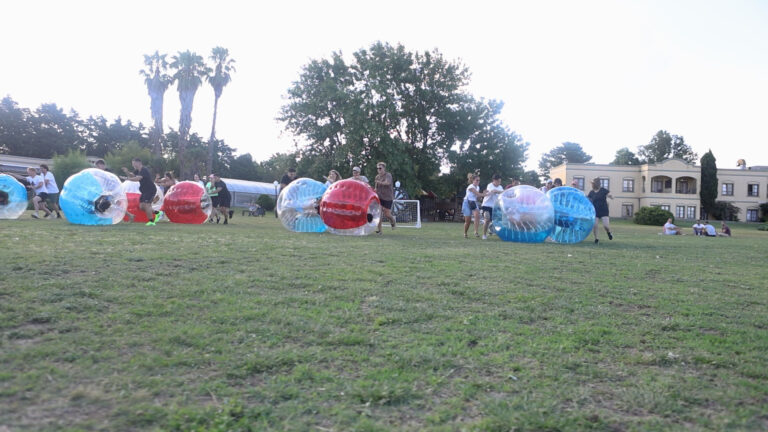In today’s budding cannabis industry, there are plenty of entrepreneurs with a green thumb but only a handful who have truly mastered the art of cannabis cultivation. Among those few is Andrew Orange, founder of Happy Cannabis Farms. Andrew’s journey from CNC machinist to cannabis entrepreneur is not just a success story but a testament to the power of passion, resilience, and the miraculous healing properties of cannabis.
As financial and accounting professionals, we have had the privilege of witnessing Andrew’s transformation and growth, and now we want to share his inspiring journey with you.
Finding His Calling in Cannabis Cultivation
Andrew’s story begins like that of many entrepreneurs, working a regular job and dreaming of something more fulfilling. For Andrew, that fulfillment was found in the realm of cannabis cultivation. He started as a CNC machinist, working tirelessly for a decade before he discovered his true passion.
It was the medicinal properties of cannabis that sparked Andrew’s curiosity and ultimately led him to leave his machinist job. Overcoming addiction to opiates and cigarettes, Andrew credits cannabis for his recovery and newfound direction in life. His experience created a passion that fueled his curiosity and desire to explore the intricacies of cannabis cultivation.
Nurturing a Cannabis Business From Seed to Success
Similar to any budding business, Happy Cannabis Farms had its share of initial obstacles. Andrew had to learn everything from scratch, with no prior experience in agriculture or cultivation. Despite the challenges, he managed to navigate his way through the intricate labyrinth of the cannabis industry. He started small, operating from an 800 square foot house with eight flowering light grow and producing around three pounds of cannabis every month.
Today, Happy Cannabis Farms has bloomed into a thriving cannabis cultivation business based in Northeastern Oklahoma. Andrew’s growth has been characterized by a relentless process of learning, experimentation, and innovation. His cultivation philosophy is centered on quality rather than quantity, ensuring that the cannabis he grows caters to the medicinal needs of patients rather than simply chasing high numbers on paper.
Andrew’s focus on quality over quantity has made Happy Cannabis Farms a beloved brand in the Oklahoma Medical Marijuana Business, known for its exquisite cannabis strains. It’s no surprise then that both dispensaries and patients are drawn to the offerings of Happy Cannabis Farms.
Cultivating the Future of Happy Cannabis Farms
Andrew envisions a bright future for Happy Cannabis Farms, one that involves vertical and geographical expansion. His ultimate goal is to make Happy Cannabis Farms a household name, not just on the national stage, but also in the global cannabis market.
“Oklahoma could completely overshadow the market on good weed that’s currently dominated by Columbia,” Andrew expressed, brimming with optimism.
To achieve this vision, Andrew plans to grow and process cannabis in larger indoor facilities, hire more staff to keep up with the rising demand for his products, and ultimately establish dispensaries.
A Cannabis Cultivation Journey Blooming with Success
Andrew Orange’s transformation from a CNC machinist to the founder of Happy Cannabis Farms stands as a testament to the power of passion, determination, and the healing properties of cannabis. His journey is an inspiration to all those who aspire to make their mark in the cannabis industry.
His story also underscores the importance of continuous learning and quality-focused growth in achieving success in the cannabis business. “Oklahoma’s where it’s at. But there’s nothing easy about it. Growing weed is not an easy job. It’s agriculture with the most regulation and compliance,” Andrew rightly concluded.
Guiding Future Cannabis Entrepreneurs
Navigating the complex world of regulatory compliance is crucial, as Andrew’s experience illustrates. In order to avoid potential pitfalls, Andrew stresses the importance of professional guidance in areas outside of one’s expertise, such as accounting and tax compliance.
At GreenGrowth CPAs, we echo this sentiment and extend our services to empower future cannabis entrepreneurs. With the right mix of passion, determination, and our financial guidance, success is within reach. We are leaders in the financial aspect of the cannabis industry, offering tailored financial advice and regulatory compliance support.
Our mission is to help businesses like yours grow and thrive. We work with cultivators, dispensary owners, and entrepreneurs, providing the financial guidance needed to navigate the industry’s regulatory landscape and optimize financial operations.
Andrew’s case demonstrates how the right financial partnership can pave the way for success in the cannabis industry. If you’re looking to follow a similar path, let GreenGrowth CPAs be your financial guide.
For more information about Happy Cannabis Farms, you can check out their Instagram @happycannabisfarms.





